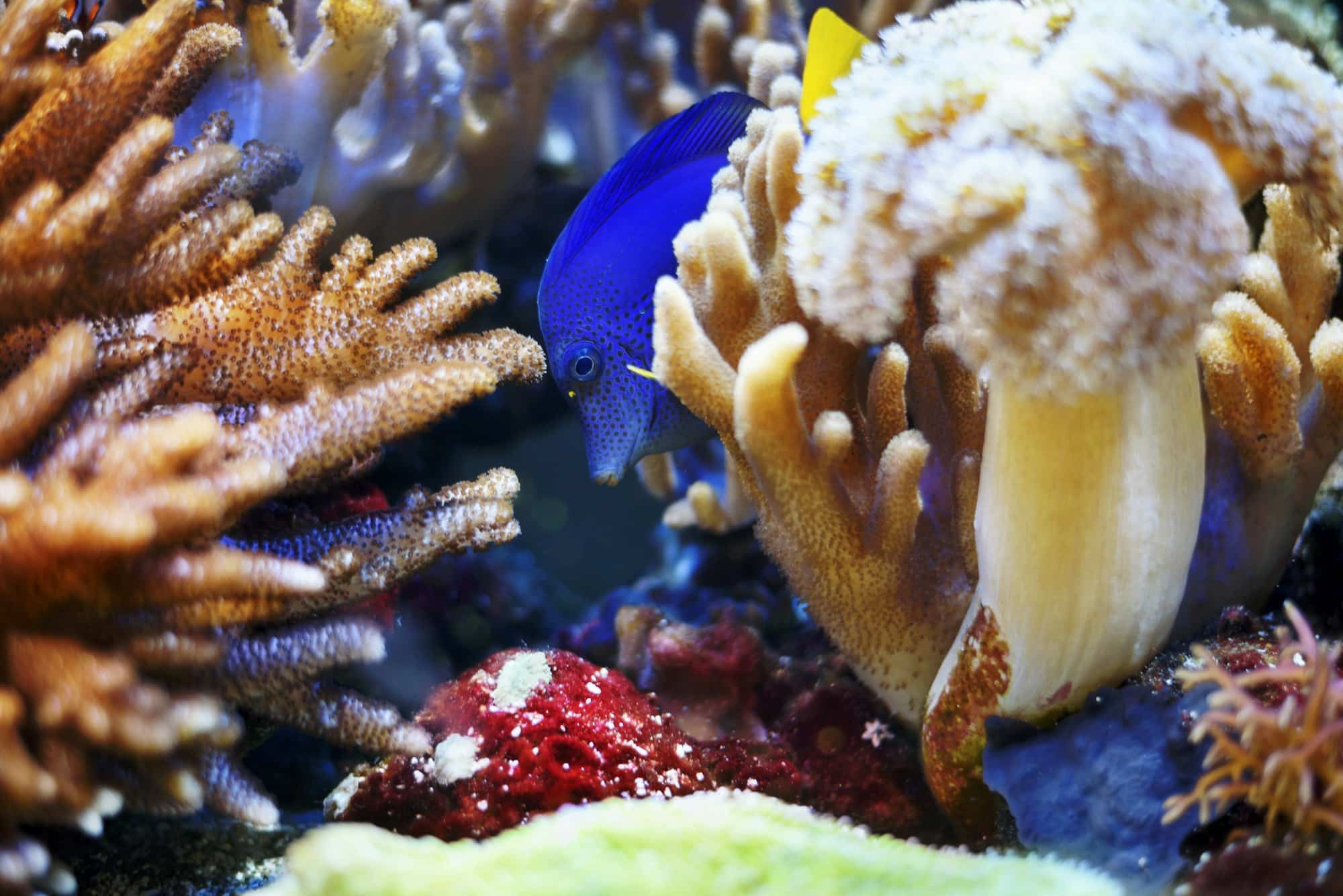Does the Introduction of Aquascaping as a Hobby Improve Mental Health and Creativity?

Aquascaping is more than just decorating your aquarium with plants and rocks. It’s an art form, a creative outlet, and a peaceful pastime that merges the beauty of nature with the tranquil motion of aquatic life. But does the practice of creating these underwater landscapes offer benefits beyond sheer aesthetic pleasure? Can the time, effort, and creativity invested in their creation have a positive impact on one’s mental health and creativity? Let’s explore this fascinating aspect of the hobby.
The Art of Aquascaping: An Introduction
A term coined in the late 1980s by Japanese aquatic plant layout enthusiast Takashi Amano, ‘aquascaping’ refers to the practice of arranging plants, rocks, and other natural elements in an aquarium in a manner that creates a visually pleasing, balanced, and sustainable habitat for fish and other aquatic creatures. But this hobby goes beyond merely arranging elements in a tank. It requires patience, attention to detail, and a keen understanding of the different components’ growth and interaction.
A lire en complément : What Are the Best Plant-Based Sources of Omega-3 for Vegetarians?
Just as a painter mixes different colors and uses various brush strokes, aquascapers carefully select and position plants, rocks, and other elements to create a visually appealing, balanced, and natural-looking underwater environment. Aquascaping can be as simple or complex as you want, from a basic layout with a few plants and rocks to intricate designs that mimic specific natural landscapes.
Aquascaping and Mental Health
In today’s fast-paced society, finding ways to reduce stress and improve mental health is becoming increasingly important. Aquascaping, with its deliberate, slow-paced nature, provides an opportunity to escape the hustle and bustle of daily life, giving your mind a chance to relax and rejuvenate.
A découvrir également : What Are the Best Foods to Support Gut Health in Individuals with IBS?
The process of designing and maintaining an aquascape can be therapeutic. Similar to gardening or painting, aquascaping puts you in a meditative state. This can lead to reduced stress levels, improved focus, and a calming effect on the mind. It’s not just the creation of the aquascape that’s beneficial; the resulting environment also promotes relaxation. Watching fish swim peacefully among plants and rocks can be a soothing experience that helps reduce anxiety and improve mood.
Moreover, the responsibility that comes with maintaining a healthy, vibrant aquatic environment can also boost one’s self-esteem. Successfully nurturing a thriving ecosystem offers a sense of accomplishment and reinforces the positive effects of patience and perseverance.
The Link Between Aquascaping and Creativity
Aquascaping is not just about placing plants and rocks in a tank; it’s about creating an ecosystem, a miniature landscape that can range from a dense jungle to a serene mountain stream. This requires a fair amount of creativity and imagination.
When you aquascape, you’re essentially playing the role of a landscape designer, but your canvas is a tank, and your materials are aquatic plants, rocks, and other natural elements. You’re limited only by the size of your tank and your imagination. This process can help stimulate your creative juices and challenge you to think outside the box.
Furthermore, creativity in aquascaping isn’t a one-time thing; it’s an ongoing process. The growth and development of plants, the movement of fish, and changing water conditions mean your aquascape will evolve over time. This demands regular creative input and adaptation, keeping your creative muscles flexed and active.
Aquascaping and Mindfulness
Aquascaping requires a keen eye for detail and a patient approach to plant growth and arrangement. It’s a process that encourages mindfulness – an awareness and focus on the present moment.
Setting up and maintaining an aquascape requires careful planning and attention to ensure the health and wellbeing of the plants and fish. You need to be mindful of the needs of each plant species, the lighting and water conditions they require, as well as the compatibility of fish species.
Engaging in this mindful process can help shift your focus from daily stressors and promote a state of relaxation. Research has shown that mindfulness can lead to a decrease in stress levels and an increase in mental wellbeing. Therefore, aquascaping can be seen as a form of mindfulness practice that not only results in a beautiful aquarium but also contributes to mental health.
The Role of Aquascaping in Socialization
Aquascaping can also serve as a social activity. There’s a thriving community of aquascapers worldwide, both online and offline. Joining an aquascaping club or forum allows you to connect with like-minded individuals, exchange ideas, seek advice, and even participate in aquascaping competitions.
These social interactions can provide a sense of belonging and community, which is vital for mental health. They can also stimulate creativity as you get inspired by other people’s aquascapes and engage in constructive critiques. In this way, aquascaping not only enriches your individual creative journey but can also contribute to a shared creative experience.
In conclusion, there’s more to aquascaping than meets the eye. It’s not just about creating a visually appealing aquarium – it’s about investing your time in a hobby that stimulates creativity, promotes mental wellbeing, and provides a meaningful connection with nature and fellow enthusiasts. Whether you’re a seasoned aquascaper or considering starting, it’s clear that this hobby has the potential to enhance your life in more ways than one.
The Positive Impact of Aquascaping on Physical Health
Besides the mental and emotional benefits, the journey of aquascaping can also provide physical health benefits. A significant aspect of maintaining a planted aquarium is the regularity of water changes to ensure the water parameters are in check for the health of the fish and plants. This involves physical activity, which can potentially help in burning some calories and improving overall fitness.
In addition, taking care of an aquarium has been reported to have physiological benefits. It is documented that watching fish in an aquarium can lower blood pressure and heart rate. This therapeutic effect can be amplified in a beautifully created aquascape where the tranquil movement of fish is complemented by the visual appeal of aquatic plants and rocks.
Furthermore, the process of aquascaping can be eco-friendly. It encourages the use of natural elements such as rocks, plants, and leaf litter, which can contribute to creating a more sustainable and environmentally-friendly hobby. Renowned aquascaper George Farmer has often emphasized the importance of using sustainable materials and practices in aquascaping – a reminder that we can enjoy our hobbies while still caring for our planet.
Conclusion: The Multifaceted Benefits of Aquascaping
In light of the explored aspects, it becomes clear that aquascaping offers more than just an aesthetically pleasing hobby. It’s a harmonious blend of art, nature, and mindfulness that has the potential to enhance one’s mental health, stimulate creativity, and promote physical well-being.
The therapeutic effect of building and maintaining a planted aquarium, combined with the calming influence of watching aquatic life, can significantly benefit mental health. The creative aspect of designing a visually appealing underwater landscape not only broadens one’s artistic horizons but also poses an enjoyable challenge that can stimulate the mind.
Furthermore, the physical activities involved in aquarium keeping, such as water changes and rearranging rocks and plants, can contribute to a healthier lifestyle. The eco-friendly nature of aquascaping also serves as a reminder of our responsibility towards our planet.
Incorporating aquascaping into one’s routine offers a plethora of benefits. It brings the beauty of nature into our living spaces, provides an outlet for stress and anxiety, and champions an eco-friendly approach to enjoying our hobbies. Whether you are a long-term hobbyist or a newcomer to the world of planted aquariums, diving into aquascaping can be an enriching and rewarding experience.
